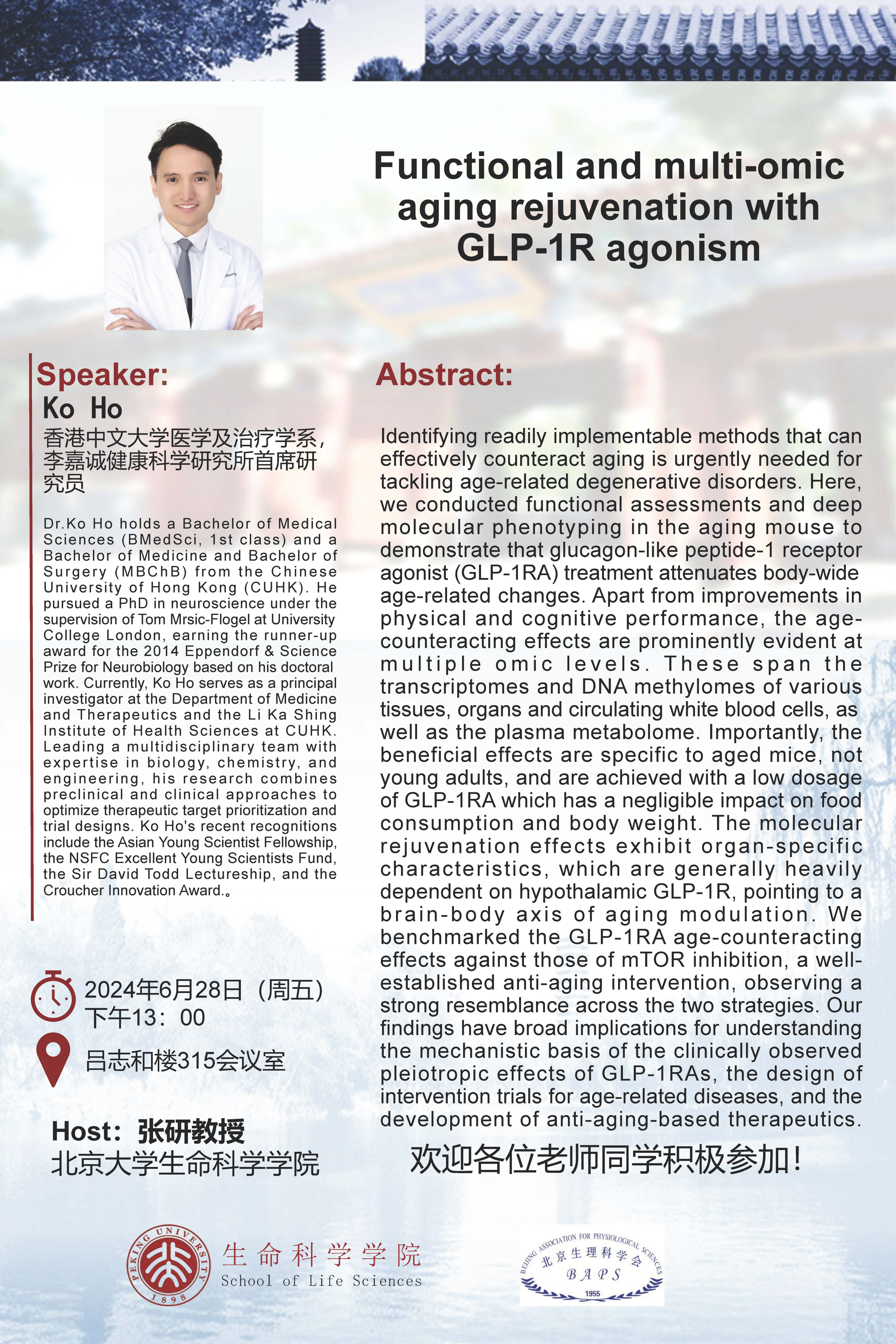
Speaker: Ko Ho, Department of Medicine & Therapeutics, Faculty of Medicine, The Chinese University of Hong Kong, Li Ka Shing Institute of Health Science
Time: 13:00 p.m., Jun 28, 2024, GMT+8
Venue: Rm 315, Lui Che-woo Building, PKU
Abstract:
Identifying readily implementable methods that can effectively counteract aging is urgently needed for tackling age-related degenerative disorders. Here, we conducted functional assessments and deep molecular phenotyping in the aging mouse to demonstrate that glucagon-like peptide-1 receptor agonist (GLP-1RA) treatment attenuates body-wide age-related changes. Apart from improvements in physical and cognitive performance, the age-counteracting effects are prominently evident at multiple omic levels. These span the transcriptomes and DNA methylomes of various tissues, organs and circulating white blood cells, as well as the plasma metabolome. Importantly, the beneficial effects are specific to aged mice, not young adults, and are achieved with a low dosage of GLP-1RA which has a negligible impact on food consumption and body weight. The molecular rejuvenation effects exhibit organ-specific characteristics, which are generally heavily dependent on hypothalamic GLP-1R, pointing to a brain-body axis of aging modulation. We benchmarked the GLP-1RA age-counteracting effects against those of TOR inhibition, a well-established anti-aging intervention, observing a strong resemblance across the two strategies. Our findings have broad implications for understanding the mechanistic basis of the clinically observed pleiotropic effects of GLP-1RAs, the design of intervention trials for age-related diseases, and the development of anti-aging-based therapeutics.
Source: School of Life Sciences, PKU
